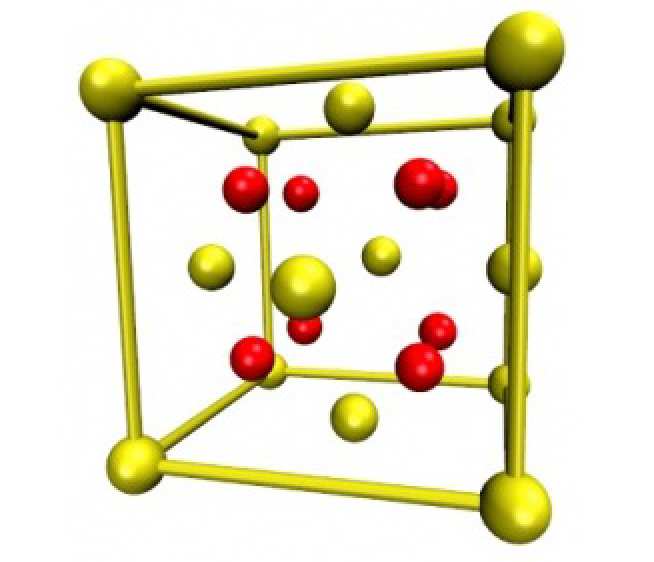Finding the free energy of interacting charged defects

TSM-CDT researchers introduce an approach that requires just one calculation for all temperatures with Wang-Landau Monte Carlo.
The beautiful crystal structures displayed by many compounds are never quite perfect. There are always some missing atoms (vacancies); some impurities also occupy the lattice sites of their host, and sometimes additional atoms (interstitials) squeeze in between atoms of the regular lattice. These defects may be essential to the useful properties of the material and the ability to calculate their contribution to the free energy is an important prerequisite for predicting their concentration in real materials and for calculating the rates of oxygen diffusion. In J. Phys.: Condens. Matter 25 395001, we introduce an approach for calculating the contribution of charged defects to the configurational free energy of an ionic crystal that may alleviate some of the computational burden of existing methods.
Vacancies in oxides generally carry charge, and repel each other strongly by the Coulomb interaction, partially screened by the electrons and defects. Mobile vacancies in an oxide carry oxygen through the material and enable solid-oxide fuel cells, and certain gas sensors to work. They are also complicit in oxidation of metals, which may be bad or good news, depending on whether the oxide is a flaky product of corrosion, or a protective film, as it is on many metals containing aluminium.
There are numerous calculations in the literature of the energies of isolated charged defects, but the explicit effect of their mutual interactions on the free energy of a material has been neglected, partly because it seems so difficult to calculate. Realistic concentrations of such defects in some materials, e.g. yttria-stabilized zirconia, may approach 10%, at which their interactions have a major effect. Our paper, J. Phys.: Condens. Matter 25 395001, shows how the free energy can be calculated with the Wang–Landau Monte Carlo method. In a single calculation the defects hop around on the lattice and a density of states is generated, from which the free energy at any desired temperature can be obtained easily by one simple integration.
We have tested the procedure on a model of point charges representing oxygen vacancies (charge +2|e|) and yttrium ions (charge -1|e|) on the cubic zirconia lattice. We found that the free energies could be fitted accurately by a simple regular solution model, with a single temperature-dependant interaction parameter.
Our conclusion is that by implementing more realistic models of the potential energy, such as fitted interatomic potentials, this approach offers a way to incorporate realistic defect–defect interactions in modelling the thermodynamic properties of a range of materials.
About the author
This interdisciplinary project is largely the PhD work of Robert Horton, a student in the Centre for Doctoral Training in Theory and Simulation of Materials (TSM) at Imperial College. Mike Finnis, his principal supervisor, is Chair in TSM, holding a joint appointment in the Departments of Physics and Materials. His co-supervisors and collaborators, Andrew Haslam, Amparo Galindo and George Jackson, are in the Department of Chemical Engineering.


